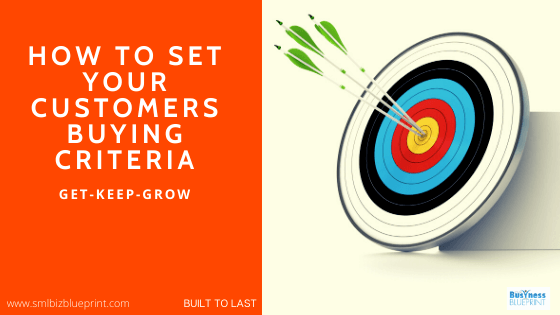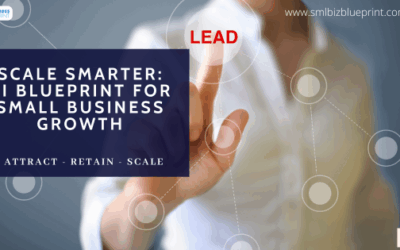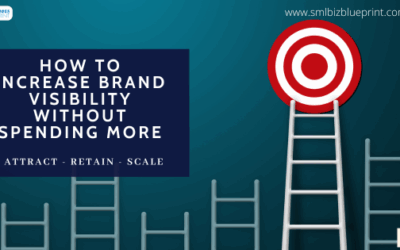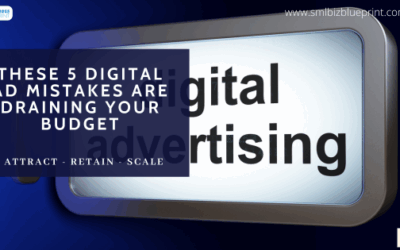How would you like to attract your buyers before they’re even thinking about buying?
Then, once you have their attention, how can you lead them through a logical flow that motivates them to buy, buy now and buy your product, even at a higher price than that of any of your competitors?
This is a science called “setting the market’s buying criteria. If you’re the one who sets up criteria for a product or service, your product or service will be the logical choice.
The buyer pyramid (from Chet Holmes) gives a breakdown of the interest in your product or service.
Potential Buyers Pyramid
At any given time, you have 3 percent of the population looking for your product.
You have an additional 6 percent to 7 percent who are open to your product but not actively buying.
The remaining 90 percent of people fit into one of three categories:
1. 30 percent: I’m not really thinking about buying your product.
2. 30 percent: I don’t think I’m interested in your product (the “soft no”).
3. 30 percent: I am not interested; I hate your product.
Now how do you attract the interest of the 90% let alone get them on the journey to purchasing your product or service.
The answer is education-based marketing

Education-Based MarketingEducation marketing is used by businesses that have a strategic approach to growing and building their business. To do this, you have to really understand and research your market. By utilizing this strategy, you will be way ahead of the game because most people don’t have a clue what their market is.The idea behind education-based marketing is to appeal to a broad audience or to motivate an audience that didn’t exist before to actually take some action. If you can bring something to the table to your buyers, or potential buyers, that no one else is bringing that gives them an advantage or gets their full attention, the game changes overnight.
So how can you use education marketing in your business.Let’s look at an example of someone in Real estateThe best way to make money in real estate is to have as many listings as possible. If you have more listings than anyone else, you’ll sell more houses than anyone else.Let’s establish a few more concepts.Market data are way more effective than product data. If you’re thinking of selling your home, most real estate professionals will come into your home and basically try to tell you why their company is better than their competitors. The problem with this approach is that all real estate companies are basically equal. They all can put you in the multiple listing service, and they can all advertise you in the local paper, put you online and do open houses.This more tactical approach is how most real estate professionals sell as they simply try to show why they can do these same things better than someone else.The other problem with this approach is that when someone is going to sell their house, you’re now dealing with a snake pit of competitive fighting.The better strategy: Get in front of the client before any competitor can even get on the scene.

The Process
Step 1
You offer a “free education on maximizing your real estate assets.”
This is sent out to homeowners in your area.
An example of the education is as follows:
a. Learn how to maximize your real estate asset, perhaps the greatest asset most of us will own.
b. If you were thinking of selling in the next year or two, what you’d better know right now.
c. The five biggest mistakes everyone makes with home ownership.
Anyone who is even considering selling is prompted to look into this. If they are CURRENTLY looking to sell, they will REALLY respond to something like this.
Important concept: When you try to sell, you break rapport. No one wants to be “sold.”
But when you “educate,” you BUILD rapport. You build respect, trust, influence, all key ingredients to making a sale.
Step 2
You get into their home to provide your “free education,” and you show them solid data on home ownership, how it is definitely the best investment people can make and so on.
As for obtaining this type of information, there has never been an easier time to get information.
The internet enables anyone in a few hours to get some great data from reliable and quotable sources.
The best few hours you will ever spend will be taking the time to put together information that helps your customer learn new things and succeed.
This strategy has been applied in every industry and situation from selling boats to furniture to computer equipment.
Back to our example…You show them great data about home ownership, and then you show them how this is the best time to sell and the best time to buy.
Why?
The market is in flux right now. Prices are still good to sell, but the market is slower, so some folks need to sell faster than others and that drives prices down.
So if you’re savvy, you can sell at a good price and find a better value for your money.
Studies also show that when a market drops it can take years to rebound. So if you’re considering selling, you’d better get going while the market is still semi-strong.
If you ARE going to sell, there are classic mistakes people make.
At this point, you give an excellent “education” on the best ways to sell, including making sure you list with the right real estate company.
Within that section of your “education,” you show them criteria for choosing a real estate company that basically fits your company profile.
Do not pitch yourself during this section.
You’ll break rapport.
If you do a good job, they will ask you about yourself and end up listing with you.
The key to education marketing is providing market data to your clients and showing how they can protect their business from problems.
Take the time to build an education that helps your clients succeed. You’ll get in to see your prospects much more easily and you’ll build such a high level of influence and rapport that your sales will go up like a rocket.
This dictates that the ultimate method of succeeding is to simply help your customers succeed.
And during that process, you can set the buying criteria in your favour.
A great presentation is loaded with bad news for your prospects. Why?
Because bad news motivates. Your prospect, when viewing a great deal of bad news,they will suddenly feel the need to take some action. Any action they take will make them feel better.
Rule number two to building a killer presentation is that the data should “set up a buying criteria” in which your product or service becomes the most logical choice.
- What are your client’s current buying criteria? Is it price?
- Easy to overcome with the right presentation.
- Is it that they want to buy only from the biggest provider?
- Easy to overcome with the right presentation.
- Is it that they don’t think they even need what it is that you sell?
- Easy to overcome with the right presentation.
Data can motivate your prospects in all and any of the situations mentioned.
There’s no situation where one of these presentations, properly prepared, can’t help overcome any challenge you may be facing.
- Declining market?
- Price is the main motivator?
- Inability to get appointments?
- Inability to get to see the higher decision makers?
All of these challenges can be met with a fantastic presentation.
Your market research that your client will find fascinating, research that is compelling enough to get you more meetings, research that is highly motivating to get your client to want to buy faster, and research that hopefully, in some way, “sets up buying criteria” where YOU are the MOST logical choice. YOU are the ONLY one these prospects want to buy from.
They will come back with not just the research, not just the facts, but with visually arresting graphics. Yes, a KILLER presentation has graphics on every panel—vivid visual and photos that triple the impact of your words, graphs that visually illustrate your points, pie charts that point out their problems, and dollar signs in all the right places that show them how you help them save, earn or increase some area of their world.

Eighty-five percent of the information in the brain is taken in through the eyes. Studies show that visuals nearly triple the communication experience. So don’t even think about presenting anything to anyone if you’re not going to use visual aids.A great title is critical.
Here’s a great title for everyone:
“The Five Most Dangerous Trends Facing (your prospect’s type of company or issue here) XYZ Type Companies/Consumers.”If you got a call that offered to teach you the five most dangerous trends facing your business, wouldn’t you be interested in hearing a little more? That’s pretty irresistible. It still has to be sold effectively, but here’s the critical point: It’s easier to sell! It’s easier to persuade someone to see critical info for their survival than it is to convince them to see you come pitch your product or service.And here’s the best part.This approach genuinely serves them. You will legitimately present them with excellent compelling data (if you do this process properly as outlined). You will genuinely find things that they will be grateful to know. The best among us is servant to us all. So serve your market by knowing more than anyone else about what’s going on. The hook of education-based marketing is to appeal to the person who is at the bottom of the pyramid, the person who is not interested at all. What can you say to that person to make them interested and start to ask about what you are selling?For example, if you are selling fitness equipment, a typical marketing strategy would be to offer a 40 percent discount on your elliptical machines. Doing this would appeal to the 3 percent of the population actually looking to buy your product and maybe the 6 percent to 7 percent who are interested. In order to appeal to a wider audience, you have to take a different approach. You could create an advertisement that educated people by using the following statistic: The American Medical Association says you can cut your chances of heart disease, cancer and diabetes by 50 percent if you just walk two miles a day.Educating everyone about the benefits of exercise appeals to everyone in the pyramid.If you are going to go after the bigger boss, you have to have an education that the boss is interested in.
Changing the Buying CriteriaWhat are your current buying criteria, and what are your new buying criteria going to be? Instead of just offering your product, offer your product plus an education. The education that you give should highlight a shortcoming that your potential customers have and show how your product or service can solve their problems or benefit them in some way.Education-based marketing can help drive more customers to your Web site, too. If your company is on a Google search page (preferably the first page!) and you’re surrounded by other companies offering the same products and services, what is going to differentiate you from your competitors?Let’s say you’re a massage therapist in Brisbane, and someone goes to Google and types “massage therapy, Brisbane” into the search bar. Many different therapists will pop up, all listing their services and prices.But what if yours said
“The Five Biggest Mistakes People Make When Choosing a Massage Therapist?”Just out of curiosity, people will click on your link because it stands out and it offers them more information.If you take people out of the market to teach them, guess who they’re going to buy from once they’ve finished reading? You!
Education-Based Marketing Sales is about building rapport, not breaking it. When you sell, or pitch, you’re often breaking rapport because the prospect may be skeptical–no one wants to be “sold.”When you educate, you build rapport. Your business building efforts AND credibility are increased significantly when you start with data that is of value to the prospect. Launch all your meetings by teaching your prospect something, or by offering data that establishes that you’ve done your homework. If your local newspaper called and offered to teach you seven things that make all businesses succeed, you’d probably find that pretty tough to decline. Sure, they’d still have to talk you into the meeting, but it would be an easier sell than talking you into a meeting to pitch you on advertising in their publication. If you embrace education-based marketing, you’ll out-market your competitors every time. Education-based marketing attracts buyers before they think about buying. It casts a wider net, attracts more buyers, and closes a higher percentage of prospects if the education you give is of true value. This is the least expensive, most effective marketing concept you’ll ever use. What kind of a free education could you offer that would make your prospects want to meet with you?




